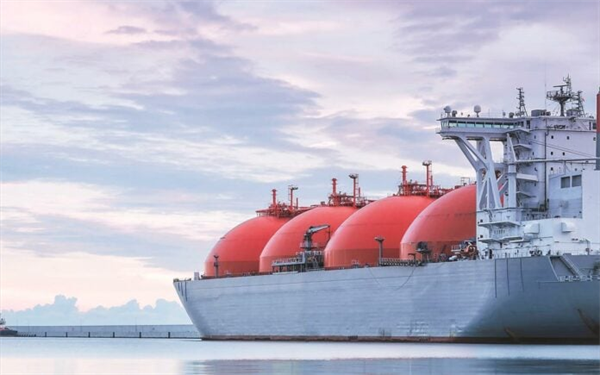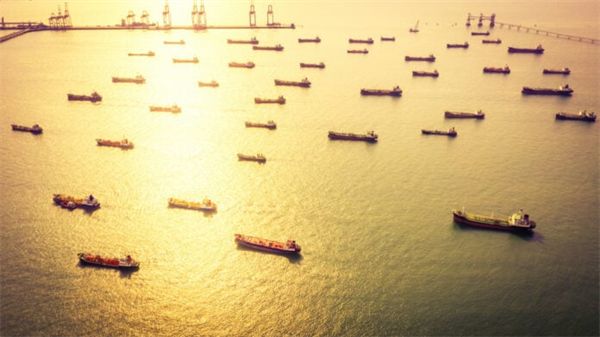By Paris Tsirigotis

The LNG carrier market is at a crucial crossroads. On the one hand, global demand for liquefied natural gas continues to strengthen, fueled by Europe's need to diversify its energy sources following the conflict in Ukraine, as well as by Asian countries' strategies for energy security.
On the other hand, the need for immediate fleet renewal is highlighted, as the aging of a significant number of ships, especially older steam carriers, is creating pressure on shipowners to turn to modern and efficient solutions. The order book remains strong although it is showing signs of slowing down. Based on data from Veson Nautical, 17 new orders had been recorded by May 2025, a number significantly lower than 2024. The ration of orderbook to existing fleet, which in 2024 reached 55%, has now decreased to 45%, with 332 ships under construction with a total capacity of 55 million cubic meters.
The age composition of the fleet is perhaps the biggest bet for the future. The average age is 10.5 years, but 31% of LNG carriers are already over 16 years old. This means that within the next five years there will be a massive need for replacement, in order for the market to keep up with stricter environmental standards and charterers' requirements for fuel consumption and efficiency. Analysts pointed out that the market would require 295 new buildings by 2028. And while 300 LNG carriers are expected to be delivered by then, it is estimated that in the same period more than 200 ships will be dismantled or converted into FSRUs.
Greek Shipowners
According to statements by industry executives to "N", Greek shipowners have emerged as market leaders. Specifically, 46 LNG carriers are on order and represent approximately 14% of the global total, while the existing Greek-owned fleet numbers over 145 ships with a total value of around 32 billion dollars.
For example, George Economou's TMS Cardiff Gas has starred in latest-generation LNG carrier deals, with orders for four at Samsung Heavy Industries shipyards (with a total value exceeding 1 billion dollars), further strengthening its position. Kriton Lentoudis' Evalend Shipping is investing dynamically in the LNG bunker vessel sector, integrating its portfolio into an emerging category directly linked to the green transition and the development of dual-fuel ships. Capital Gas Carrier Corp, owned by Evangelos Marinakis, has recently been in the spotlight as it sold for scrap the 138,208 cubic meter "Trader II", which was built in 2002.
With this move, the number of LNG carriers that were sent for recycling this year reached 11, a record number, which underlines the need to renew the fleet. It is noteworthy that the "Trader II" was purchased in 2022 for approximately 26 million dollars. The need to renew the fleet was evident in the recent statement by Capital CEO Gerasimos Kalogiratos, who stated that "the positive environment, combined with the retirement of older carriers, enhances the value of our new generation of ships."
Shipping market shows mixed signals

Although global shipping is facing unstable fundamentals and geopolitical shocks, the freight market picture is multidimensional. From the stability in LNG and LPG carriers, to the slump in containerships and the boom in tankers, the landscape looks more fragmented than ever.
Based on the latest data, the shipping sector is on a trajectory of contradictions. Geopolitical tensions, the changing balance of supply and demand for capacity and the turmoil in the global economy play a key role, composing a complex image, which leads freight rates in the largest categories of the industry to continuous fluctuations.
Containerships
The containership market continues to decline, with spot rates falling for an eleventh consecutive week, with the Drewry World Container Index sliding to 2,119 dollars per FEU at the end of August, a weekly loss of 6% and an annual decline of 59%. The pressure was particularly strong on routes originating from Shanghai, with rates to Rotterdam down 10%, to Genoa down 5%, while rates to New York and Los Angeles also fell.
Drewry warned that the supply and demand balance will deteriorate further in the second half of 2025, leading to a new price slump, with US port fees on Chinese ships and reshuffles in trade routes playing a decisive role.
Tankers
The tanker charter market presents a contrasting picture. Despite conflicting estimates for oil demand, with the International Energy Agency appearing cautious and OPEC more optimistic, shipowners‘ revenues recorded a spectacular improvement. Indicatively, VLCCs increased from 30,000 dollars to 47,000 per day in August, Suezmaxes shot up from 27,500 to 62,000, while Aframaxes jumped from 23,200 to 35,000 per day. Finally, MR tankers moved up in the Atlantic, reaching 36,000 per day, while in the Pacific they remained at the lower levels of 20,000. These variations reflect the impact of trade flows: mid-sized vessels benefit from reassignments to the Atlantic and Mediterranean, while very large tankers are boosted by India's shift to distant suppliers such as Brazil.
LPG and LNG carriers
In contrast to the volatility, the LPG carrier market has shown remarkable stability. The charter cost for a VLGC (Very Large Gas Carrier) of 84,000 cubic meters remains at 2.2 million dollars per month, while LGCs (Large Gas Carriers) are stable at 975,000 and MGCs (medium gas carriers) are slightly up at 950,000. This balance shows that the market has consolidated at high levels, with changes limited in the short term. LNG carriers have come under little pressure, with the charter cost of a MEGI/XDF type vessel of 174,000 cubic meters decreasing slightly to 33,000 per day east of Suez, while it remained at 35,000 dollars west. One-year time charters stood at 44,000, a drop of 1,000 per day. This decline is considered as cyclical, driven by subdued summer demand, with market expectations pointing to a rebound as winter approaches.
Bulk Carriers
The picture in the dry bulk market is mixed. The Baltic Dry Index recorded a slight increase at the close of the last week of August, reaching 2,025 points. However, the individual sizes showed differences, with capesizes increasing due to strong Chinese demand for iron ore, panamaxes declining due to weakness in grain exports and supramaxes moving marginally upwards. In this context, a recent BIMCO report outlines the prospects for the bulk carrier market and estimates that there will be a weakening of the supply-demand balance in both 2025 and 2026. With the US tariffs directly affecting 4% of global demand for bulk carrier tonnage, demand for ships is expected to increase by just 1% in 2025 and by 1%-2% in 2026. On the other hand, ship supply is estimated to increase by 1.9% in 2025 and by 2.6% in 2026, a result of the higher rate of Panamax and Supramax deliveries.
(Editor: liaoyifan )


